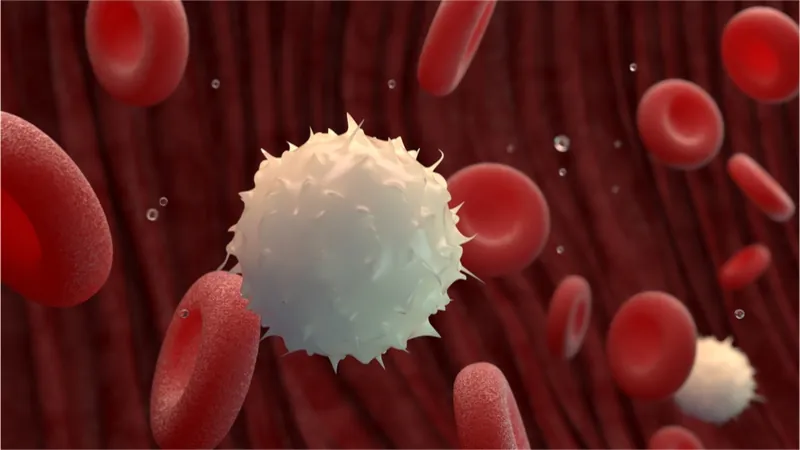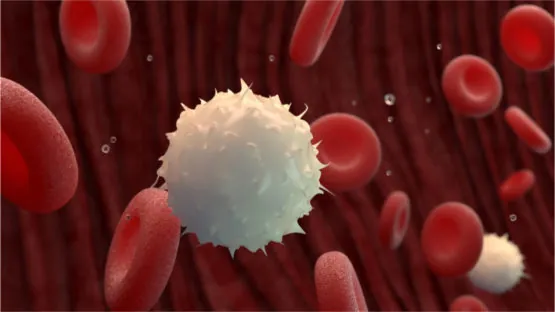A new review takes a look at the association between the decline of the immune system and the development and course of age-related diseases.
Our immune system is the ultimate defense against invading pathogens and unwanted waste, and its efficient operation is critical to the healthy function of every tissue in the body. We have many kinds of immune cells, and they perform a diverse range of tasks, including patrolling for pathogens, supporting tissue repair and healing, removing senescent cells to prevent their accumulation, breaking down cellular waste and clearing away cell debris, and much more.
Unfortunately, as we get older, the immune system as a whole begins to fail and break down in a process known as immunosenescence. Immunosenescence in a nutshell is the gradual deterioration of the immune system due to advancing age. The adaptive immune system is also affected more than the innate immune system is by immunosenescence.
A serious consequence of immunosenescence is the loss of ability to defend against dangerous pathogens. A barely functional immune system means that literally any infection is a serious matter; what would be considered a trivial injury or infection for someone younger can become a matter of life and death for an older person with a weakened immune system.
Along with the obvious vulnerability to infection, immunosenescence is also accompanied by insidious inflammation. Normally, immune cells use inflammation as a tool to destroy invaders, recruit other immune cells to an injury site, and facilitate wound healing. However, as immunosenescence kicks in, the immune cells begin to behave more erratically, activating inappropriately, and greatly increasing the level of chronic systemic inflammation via their secreted inflammatory signals.
This persistent systemic inflammation is often called “inflammaging“, and immunosenescence is only one of the sources, but it is a significant one. Inflammaging supports the onset and progression of a number of age-related diseases, including atherosclerosis, arthritis, hypertension, and cancer. On top of that, it also reduces tissue repair and regeneration, making wound healing slower and even trivial injuries harder to recover from.
Today, we want to point out a new review that takes a closer look at the association between immunosenescence and age-related diseases [1]. The researchers explore how the aging immune system contributes to the development of age-related diseases, such as neurodegenerative diseases, rheumatoid arthritis, cancer, cardiovascular, and metabolic diseases.
The aging immune system (immunosenescence) has been implicated with increased morbidity and mortality in the elderly. Of note, T cell aging and low-grade inflammation (inflammaging) are implicated with several age-related conditions. The expansion of late-differentiated T cells (CD28−), regulatory T cells, increased serum levels of autoantibodies, and pro-inflammatory cytokines were implicated with morbidities during aging. Features of accelerated immunosenescence can be identified in adults with chronic inflammatory conditions, such as rheumatoid arthritis, and are predictive of poor clinical outcomes. Therefore, there is an interplay between immunosenescence and age-related diseases. In this review, we discuss how the aging immune system may contribute to the development and clinical course of age-related diseases such as neurodegenerative diseases, rheumatoid arthritis, cancer, cardiovascular, and metabolic diseases.
Conclusion
Given the range of age-related diseases as well as the increased risk from infections and the reduction of tissue repair, the rejuvenation of the immune system should be a top priority for our field.
Thankfully, there are a number of initiatives seeking to achieve just that, including Intervene Immune‘s efforts to regenerate the thymus. There are also other companies working on replacing lost hematopoietic stem cells in the bone marrow with fresh cells in order to restore the production and supply of immune cells across the body.
Senolytics, the class of drugs capable of destroying inflammatory senescent cells, may also find utility in the selective destruction of damaged and dysfunctional immune cells.
Ultimately, the decline of the immune system is likely a big reason we age, and solving the problem of immunosenescence would almost certainly be a big step towards longer, healthier lives free from the diseases of aging.
Literature
[1] Barbé-Tuana, F., Funchal, G., Schmitz, C. R. R., Maurmann, R. M., & Bauer, M. E. (2020, August). The interplay between immunosenescence and age-related diseases. In Seminars in Immunopathology (pp. 1-13). Springer Berlin Heidelberg.



